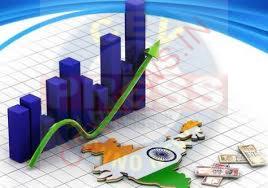FEATURES OF INDIAN ECONOMY AS AN UNDERDEVELOPED ECONOMY
India, despite being the world’s sixth-largest economy, still faces the challenge of being classified as an underdeveloped economy. Here are some features of the Indian economy that reflect its underdeveloped status:
1. Low Per Capita Income: India has a low per capita income, which means that the average income earned by an individual is low. According to the World Bank, in 2020, India’s per capita income was around $2,100, which is significantly lower than other developed countries.
2. Unequal Income Distribution: Income inequality is a significant feature of the Indian economy. The rich-poor divide is quite stark, and a large percentage of the population lives below the poverty line. The Gini coefficient, which measures income inequality, is high in India, indicating that income distribution is skewed.
3. Low Industrial Development: The Indian economy is still largely agrarian, and industrial development has been slow. The industrial sector’s contribution to GDP is relatively low, and there is a lack of diversification in the economy. This has resulted in limited job opportunities, particularly in rural areas, and a lack of technological progress.
4. Unemployment: Despite being a young country with a large workforce, India has struggled to provide employment opportunities to its citizens. Unemployment is high, particularly among youth and women. The lack of industrial development, coupled with a low level of skill development, has resulted in a significant jobs crisis.
5. Poor Infrastructure: The quality of infrastructure in India is poor, particularly in rural areas. There is a lack of access to basic facilities such as electricity, clean water, and sanitation. Poor infrastructure has been a significant impediment to economic growth.
6. Dependence on Agriculture: Agriculture still plays a significant role in the Indian economy, and the majority of the population is employed in the sector. However, agriculture has been plagued by low productivity, poor irrigation, and outdated farming techniques. This has resulted in a low level of output, which has affected the country’s economic growth.
7. Limited Access to Education and Healthcare: Access to education and healthcare is limited in India, particularly in rural areas. Illiteracy rates are high, and the quality of education is poor. Healthcare facilities are inadequate, and there is a lack of access to essential medicines.
In conclusion, despite being one of the fastest-growing economies in the world, India still faces significant challenges in becoming a developed economy. Addressing these challenges will require a sustained effort by the government and society as a whole.


